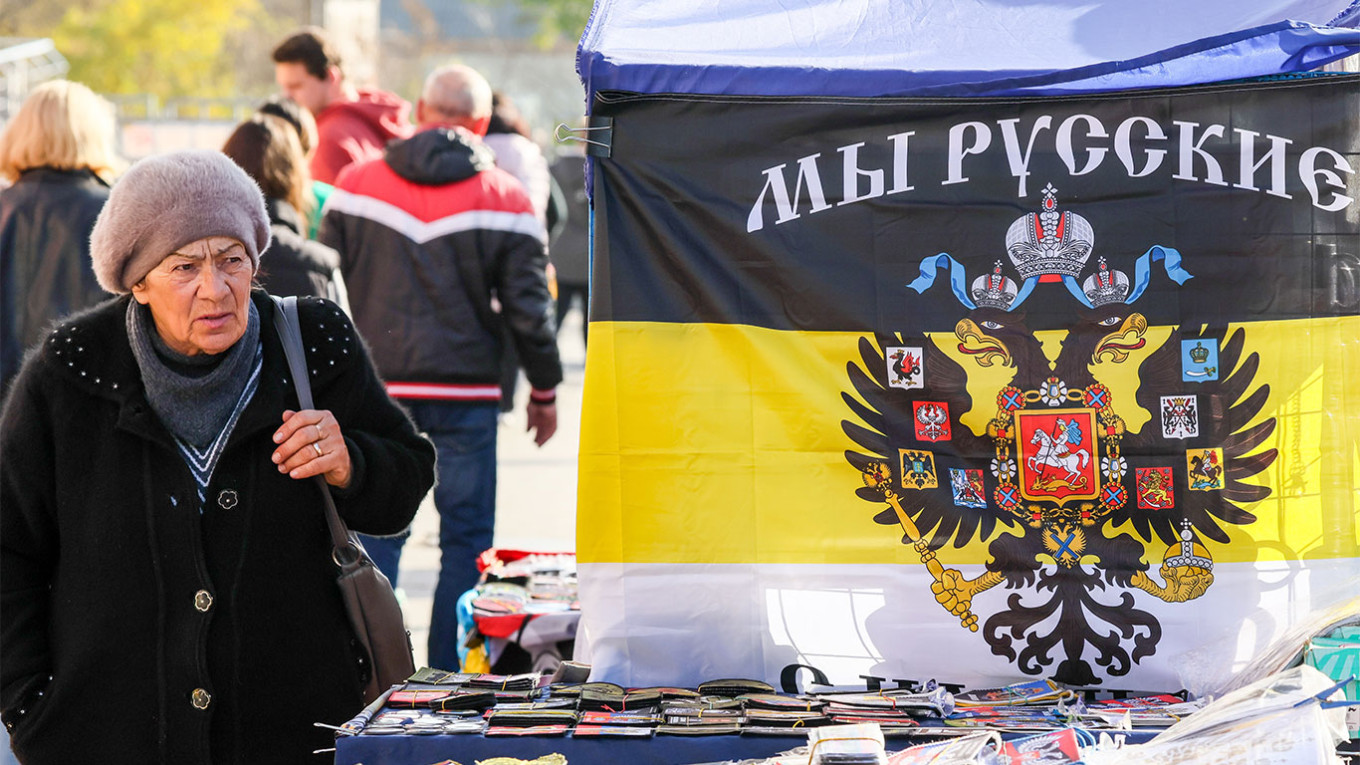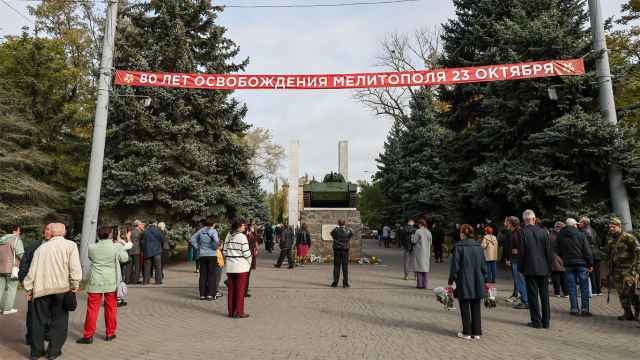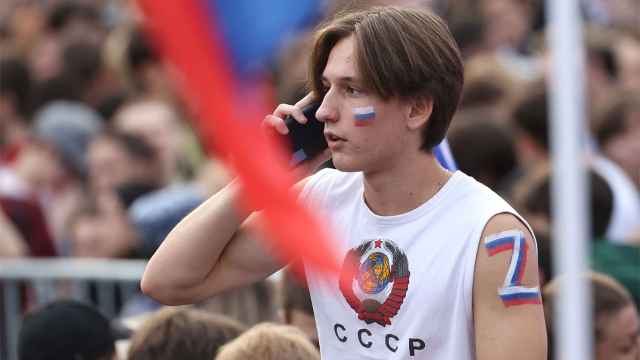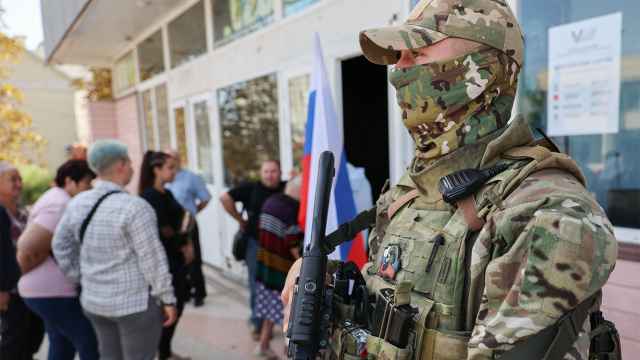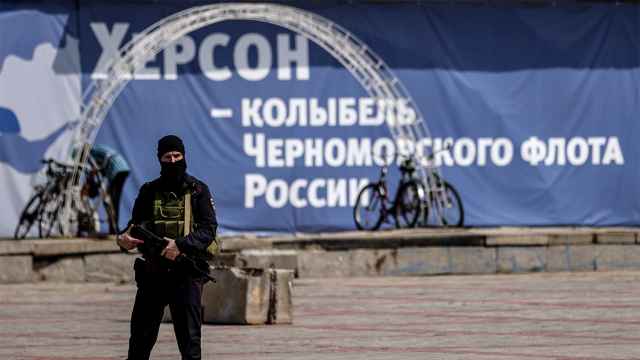President Vladimir Putin last visited Ukraine in 2013. Going into his full-scale war on Russia’s neighbor, Russian propagandists’ understanding of the country appeared stuck in that same year. Russian elites simply refused to acknowledge or understand Ukrainian civic and national identity. Nor could they admit how much Russia’s authoritarian turn and the transformation of the Donbas into a gangster state under Russian occupation served as a warning against heeding Moscow’s siren call of Russian brotherhood.
Against the post-2014 backdrop of a program of promoting the Ukrainian language and culture alongside efforts to minimize Russia’s levers of influence, Ukrainians’ understanding of their country’s identity and future grew ever more antithetical to how Moscow saw them. This much was apparent from the plethora of sociological research on Ukrainian civic identity, or even to any informed visitor after 2014. But not, apparently, to Russian propagandists. As Russian troops invaded Ukraine in 2022, they initially deployed the same methods and scripts they used eight years earlier.
In 2022, upon seizing a locality in Crimea or the Donbas, the Russian occupying forces first moved to seize the offices and equipment of Ukrainian internet and mobile phone operators. Then they would install their own networks, block access to objective news sites, and rewire all internet traffic through Russian providers via Crimea.
Having isolated the territory and its people and placed them under digital surveillance, the Russians then (re)activated FSB-handled local “public opinion” curators (who would stage pro-Moscow rallies) and collaborator officials, and (re)launched local pro-Russian social media accounts. Ukrainian residents living under occupation could acquaint themselves with the Russian alternate reality version of events through newly installed Russian satellite television packages, or via the roving buses topped with loudspeakers that blared propaganda about Russian benevolence to starving Ukrainians queuing for hours for free bread and water.
During the first six months of the full-scale invasion, the content developed for the occupied regions post-2022 was very similar to that used in the Russian Federation. It simply tried to convince people who were facing the reality of Russia’s war to destroy Ukrainian statehood that the Kremlin’s fiction of the special military operation was in fact true – a tall order.
In search of legitimacy, the Kremlin appointed largely unknown and unpopular local officials to head the collaboration authorities. They also assigned the job of managing the post-2022 information space to Crimean propagandists and officials who assumed that the same approach that was successful in 2014 would also work in Kherson in 2022. They were wrong. The propaganda failed to resonate and was of embarrassingly low quality. For example, Crimean-managed news channels aired clips supposedly depicting the occupied city of Kherson that were actually filmed in Yeysk, in Russia’s Krasnodar region.
In the fall of 2022, after Ukraine liberated Kherson and the Kharkiv region and Russia's sham annexations of four Ukrainian regions, the Kremlin shifted its approach. Russians began to assume increasingly public political positions in these regions, as the pretense that there was organic support from local people was no longer needed.
From then on, these officials mentioned the “special military operation” and events on the front less and less. They began acting as if the occupied territories had not simply been returned to Russia, but had always been Russian. Instead, they called the Ukrainians occupiers and aggressors, with cities like Zaporizhzhia — although never controlled by the Russians — consistently referred to as being “temporarily occupied by Ukrainian militants.”
Rather than a doubling down on propaganda narratives that hadn’t worked to date, this shift was an admission of defeat. The Kremlin understood that after 2014, it could not simultaneously produce effective propaganda for both Russians and Ukrainians in the occupied regions. So, it decided to create a new two-tier propaganda system.
The first tier, aimed at Russian audiences, comprises statements from collaborator officials, the output of newly established regional outlets of Russian federal media, and official collaborator Telegram channels. They produce narratives similar to those inside Russia itself: that Russia is fighting a special military operation against Western-backed Nazis to liberate Russian speakers from genocide and defend itself from Western attack. In so doing, it has made life better and will inevitably win.
As this narrative is primarily aimed at Russians and their proxies, the tendency to ignore residents’ continued daily experience of war makes sense. It is better not to remind Russians that it used to be Ukraine. It is far better to ignore the war entirely, as they don’t like hearing about it. Explaining that Russia is defending itself makes it easier to mobilize people for what they think is a defensive war.
Propaganda narratives are about creating a reality, or story, out of selectively picked facts in a way that avoids dissonance with what is actually happening. Clearly, these narratives are hard for Ukrainians living in occupied regions to believe. But they can still work for Russians watching at home.
The second tier, comprises newspapers, television and Telegram channels specially created for regions under occupation since 2014. The Russian occupation authorities introduced a free satellite package, “Russian World,” that is sometimes directly imposed on residents by installation brigades overseen by Russian Deputy Prime Minister Dmitry Chernyshenko. As Ukrainian satellite terminals were dismantled by official edict, some families chose to install the Russian package so their children could watch television.
“Russian World” provides access to 20 Russian channels and to 10 local channels across the regions of Kherson, Zaporizhzhia, Luhansk, Donetsk, and Crimea. These channels are mostly unavailable outside the occupied territories, with the package encrypted so that others in Russia, Ukraine, or abroad cannot find out what they are telling viewers.
While the main topics of the regional channels and the federal Russian television channels are broadly similar, to minimize dissonance, the framing differs. If federally available coverage proclaims Russia’s greatness, the local channels instead seek to demoralize and disorient residents by focusing on Russia’s invincibility and the impossibility of a Ukrainian victory.
The local channel Tavriya, which serves occupied Kherson region, focuses on the theme that Ukraine has become totally unliveable and faces a hopeless future. A recent segment in September 2023 asserted that Ukraine was almost entirely depopulated as everyone had fled from persecution from the Nazi authorities and/or saw no point in defending the country. Silently, a question is posed to viewers: why side with a country that nobody else is defending?
The local channels also feature the destruction of the war, though it is always inflicted by Ukraine, for no reason beyond “insane Kyiv Nazis” seeking to hunt and harm ordinary civilians. The fantastic claims of Ukrainian cruelty use fear to coerce residents into associating with the occupiers. For example, Russia has forcibly issued Russian passports to Ukrainian citizens, even threatening to remove children, access to food provisions, and healthcare for those who refuse to accept one. Now, propagandists tell the occupied territories that Kyiv will treat anyone who took a passport as a collaborator and punish them. On unofficial pro-Moscow Telegram channels, this narrative is bolstered by the argument that Ukraine has betrayed its people in the occupied territories by leaving them to the Russians. Kyiv did not come back for them, and now everything will be just as Russia planned.
If you believe that your country betrayed you, it becomes much easier to justify betraying your country. Especially if you are starting to think that it is pointless to wait for a liberation that will never come. And even if the Ukrainian army does come back, they may see you as a collaborator because you took a Russian passport. Why not just make life for yourself and your family by integrating into the new Russian order? What other options are there?
For those mentally strong enough to live through the traumas of war and occupation and still resist the power of the arguments above, the Russians have other methods besides propaganda. The occupying forces do not try to hide their brutal torture chambers, kidnappings of Ukrainian children, and summary executions from their new constituents. Everybody knows the cost of resistance. The television channels’ intense focus on the exposure and punishment of “Ukrainian terrorists” (who are in fact anti-Russian partisans, including children) means nobody is likely to forget it.
The difference between general Russian propaganda and its localized counterparts in the occupied regions was initially a story of failure: A failure to understand Ukrainians, a failure to sell them the Russian story. But by recognizing that failure, Russian narratives have become more effective. Residents are left with two options. They can deny reality and become the audience of Moscow’s fiction. Or they can accept the reality of living under occupation and act out this fiction for everyone else.



